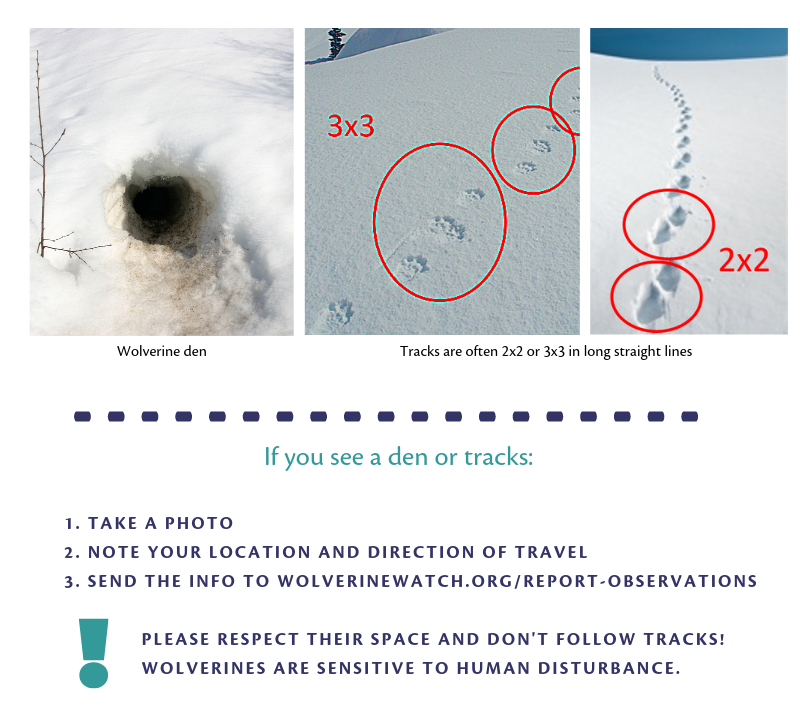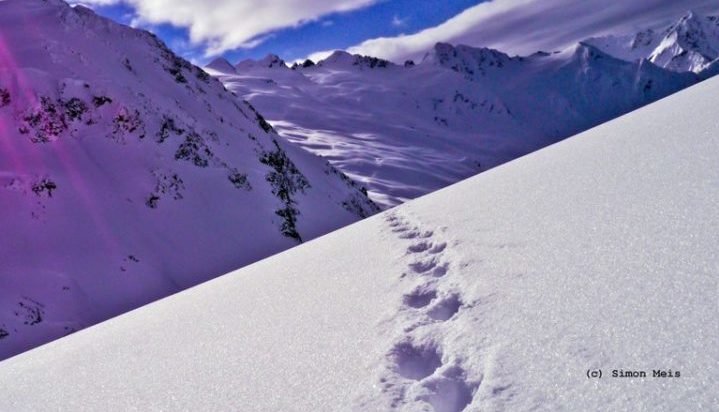Project to study habitat needs of the elusive mammals
Do you plan on spending some time in the mountain ranges of southeastern British Columbia in the coming months? You can take part in wolverine research.
Y2Y is partnering on an exciting project this winter with Wolverine Watch, a scientific collaboration of researchers from B.C. and Alberta.
You can help if you ski, snowshoe, snowmobile or take part in other winter activities across western Canada — particularly the Selkirk, Purcell, Columbia, Monashee and Cariboo ranges of southeastern B.C. — researchers are asking you to keep your eyes peeled for signs of wolverines and share what they see. It’s your chance to be a community scientist!
Researchers are interested in sightings of wolverine, wolverine tracks, scat and dens, or what people might think was a wolverine sign. Reports can be made at the Wolverine Watch website.

While the chances of seeing a wolverine are rare, dens and tracks are more likely and easier to see because the mammals have a characteristic gait and paw print. Wolverines are also sensitive to disturbance, so after people record their observation, it’s best if they move on and do not try to follow the tracks. Learn how to share your findings with the researchers.
The South Columbia Mountains Wolverine Project is one of several Wolverine Watch projects collecting data in western North America in order to better understand whether or not human activity impacts wolverine distribution, reproduction, connectivity and gene flow.
Research regions include Canada’s northern Columbia region, the southern Columbia region and the Canadian portion of the Crown of the Continent ecosystem. All these regions are critical to the integrity of the Yellowstone to Yukon corridor.
Data will be used to inform agency decision-makers, landowners, natural resource companies, and First Nations, to ensure the needs of wolverines are incorporated into land use plans, management plans, highway mitigation and other projects.


